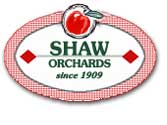Dad and I had a chance to slip away this week to go to a grower meeting in Adams County. Events like this are a good opportunity to see what other growers are doing, and learn from the Extension and Agriculture staff at Penn State.
One of the entomologists observed that it is much harder for growers today than it was 30-40 years ago. Back then, there were a few standard sprays that could be applied on a fixed period, and as long as the period was maintained, they did a pretty good job of killing most of the pests. But they were “broad spectrum” insecticides that killed most of the insects in the field. Regulations enacted in the 90’s forced us to consider not only human health, but “environmental” considerations as part of the pesticide approval process. Long story short, most of those insecticides are gone and were replaced with the idea of Integrated Pest Management (IPM).
We subscribed to IPM early on, because it decreases the total cost of pest management while maintaining good quality. The basic idea is that you monitor the bugs in your field, only treat when projected damage reaches an economic threshold, and then try to treat only the pests that are causing problems while maintaining as many predator insects as possible. This requires a lot of vigilance by scouting for problems, and laying traps for the bad insects so that we can determine their populations. It also requires a great deal of care in selecting sprays that target exactly the right pest at the right time, in order to do the least damage to the beneficial insects. So where we used to have a half-dozen go-to sprays, we now have many more.
Which brings me back to the problem of progress. In the “green revolution” of the 50’s and 60’s, the average extension agent may have projected that science would make fruit growing a lot easier by the next century. But I don’t think it has turned out that way:
Where we used to have a few sprays, we now have many. And we need to rotate their use so that they continue to maintain their effect on bugs that are always trying to evolve resistance. And not only the bugs evolve, but so do people’s tolerance for anything synthetic. Where there used to be a belief that science was advancing humankind, many people now are skeptical of anything man-made used to improve the quality of their food.
Our sprays are definitely safer (for the environment and for people). But despite that, the regulations to use them are far more stringent, and some would say, inane. It takes a good deal of work to figure out exactly how to comply with the constraints of re-entry period, pre-harvest interval, and maximum seasonal application quantities, all of which may differ by type of fruit even for the same chemical (don’t ask me why). In other words, we have federal rules that say that a particular fruit with a particular spray is so safe, it can be eaten immediately after treatment, but it is unlawful for a worker to enter the field within 24 hours after treatment. Say what?
And all of those regulations make the development cycle of new treatments very expensive. It takes millions of dollars and many years to prove a new chemical is safe (for people and the environment) and effective. And it needs to be proven on every crop that will be treated, which means lots of replication. So many companies just skip the odd fruits because the cost is more than the benefit – which can lead to situations where there is no (legal) way to treat unusual fruits or vegetables against pests, which leads to continued monoculture. (The Farm Bill provides some funds to help with this problem, which is another good reason to support that legislation.)
Future posts will examine the new complexities brought about by invasive species and pathogens.

